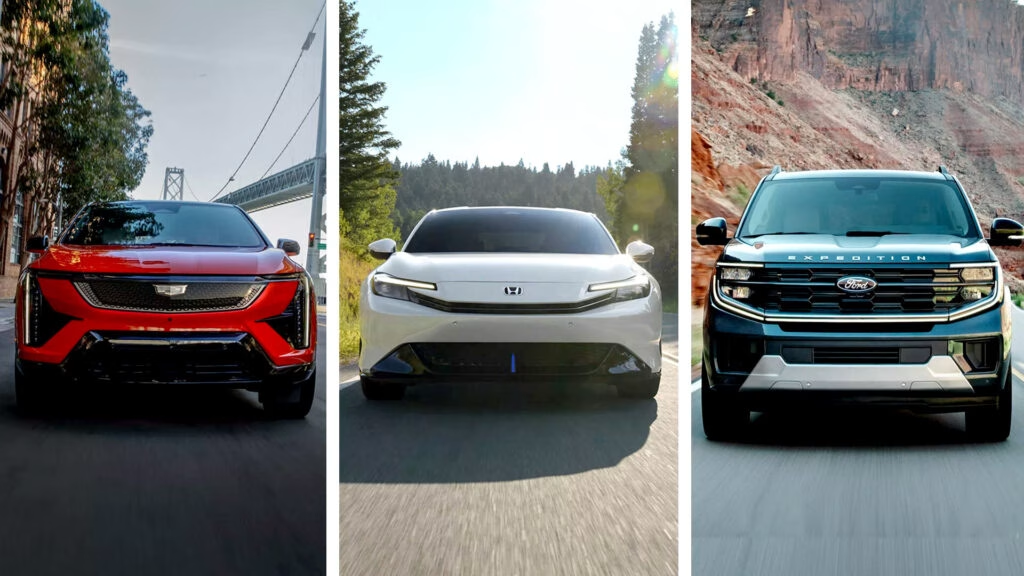Which Cars, Trucks, and SUVs Are Competing for the 2026 North American Titles?
Thirty vehicles are about to battle it out for the coveted 2026 North American Car, Truck, and Utility Vehicle of the Year awards. If you’re wondering what’s new, who’s leading, and why these awards still matter, you’re in the right place. Let’s break down the contenders, the surprises, and what it all means for drivers and the industry.
What Makes the 2026 Awards Different From Previous Years?
This year’s lineup is a mix of fresh faces and familiar badges, but with a twist: the car and utility categories are wide open, while the truck segment feels a bit more predictable. Cadillac and Ford are flexing their muscles, each snagging three nominations. That’s no small feat, especially as the industry shifts toward electrification and advanced tech.
The Detroit Auto Show, once the crown jewel of automotive events, will host the big announcement on January 14. While the show’s glory days may be behind it—attendance has dropped sharply in recent years—it still serves as the stage for these influential awards. For automakers, a win here isn’t just a trophy; it’s a marketing goldmine and a nod from some of the toughest critics in the business.
Which Cars Are in the Running for 2026 North American Car of the Year?
Six cars made the shortlist, and each brings something unique to the table. Here’s the lineup:
– Audi A5: Sleek, sporty, and always a crowd-pleaser, the A5 continues to set the bar for German engineering in the midsize segment.
– Dodge Charger: The return of the Charger signals Dodge’s commitment to performance, even as the industry pivots to electrification.
– Honda Prelude: A nameplate that stirs nostalgia, the new Prelude aims to blend classic coupe fun with modern efficiency.
– Kia K4 Hatchback: Kia’s hatch is gunning for value-conscious buyers who don’t want to compromise on style or tech.
– Mercedes CLA: With a heavy focus on AI and electric power, the CLA is Mercedes’ answer to the next-gen compact luxury market.
– Nissan Sentra: The redesigned Sentra hasn’t officially debuted, but a peek at China’s Sylphy hints at a more upscale, tech-forward compact.
The diversity here is striking. From German luxury to American muscle and Asian efficiency, the judges have their work cut out for them.
Why Does the Truck Category Feel Less Exciting This Year?
Let’s be honest: the truck segment this year feels a bit… sleepy. Forty percent of the nominees are just new trims rather than all-new models. The Ford F-150 Lobo and Maverick Lobo are essentially fresh takes on existing trucks, not ground-up redesigns.
Still, there are a couple of bright spots. The Ram 1500 Hemi is back with its beloved V8, a move driven by die-hard fan demand. But the real standouts are the facelifted Ram 2500—with a new turbodiesel and bolder looks—and the Rivian R1T Quad Motor, which boasts a jaw-dropping 1,025 horsepower and the much-anticipated NACS charging port. The electric truck wars are heating up, and Rivian’s entry is proof that innovation isn’t slowing down.
Who Are the Heavy Hitters in the Utility Vehicle Category?
Nineteen contenders are vying for the Utility Vehicle of the Year title, and this is where things get spicy. Cadillac is all-in, fielding the Optiq, Vistiq, and Escalade IQ—each representing a different flavor of luxury and electrification. Ford’s Expedition, Honda’s Passport, and Hyundai’s Palisade are also in the mix, along with the new Jeep Cherokee, Toyota’s 4Runner and RAV4, and Volkswagen’s Tiguan.
What’s interesting is the sheer variety: from the all-electric Lucid Gravity and Volvo EX30 to hybrids like the Subaru Forester Hybrid and Toyota RAV4 Hybrid. The field reflects the broader market trend—consumers want options, whether it’s plug-in, hybrid, or traditional gas.
How Do These Awards Influence the Auto Industry?
Winning a North American Car, Truck, or Utility of the Year award is a big deal. According to data from J.D. Power, vehicles that earn major accolades see a measurable bump in consumer interest and showroom traffic. Automakers often leverage these wins in advertising, and it’s not just about bragging rights—these awards can sway undecided buyers and boost brand credibility.
The selection process is rigorous, too. A panel of independent automotive journalists from across the U.S. and Canada test, debate, and vote. Their focus? Real-world usability, innovation, value, and driver engagement. The result? A shortlist that actually reflects what buyers care about, not just what’s flashy.
Are There Any Surprises or Underdogs to Watch?
Absolutely. The Honda Prelude’s return is a curveball—few expected Honda to revive the iconic coupe. The Mercedes CLA’s push into AI-driven features could set a new standard for compact luxury. And don’t sleep on the Kia K4 Hatchback; Kia has quietly become a force in delivering high-value, tech-rich rides.
On the utility side, Cadillac’s trio is ambitious, but the Lucid Gravity and Polestar 4 might steal some thunder with their cutting-edge EV credentials. The Rivian R1T Quad Motor, meanwhile, is the wild card in the truck segment—if performance and innovation are what the judges crave, Rivian could pull off an upset.
What’s the Story Behind the $100,000 Scholarship Donation?
Beyond the vehicles, there’s a feel-good twist this year. The NACTOY board is donating $100,000 to the SAE Foundation, funding scholarships for students pursuing careers in automotive engineering and journalism. Each year, one student in each field will get a scholarship, helping to nurture the next generation of industry leaders. For those interested, details are available on SAE International’s website.
What Should Buyers and Enthusiasts Take Away From This Year’s Competition?
The big takeaway? The 2026 North American Car, Truck, and Utility Vehicle of the Year awards aren’t about perfection—they’re about smarter adjustments. Whether it’s a familiar badge with a new twist or a bold leap into electrification, the contenders reflect where the industry—and drivers—are headed. Start with one change this week, whether it’s researching a new model or test-driving a hybrid, and you’ll likely spot the difference by month’s end.

